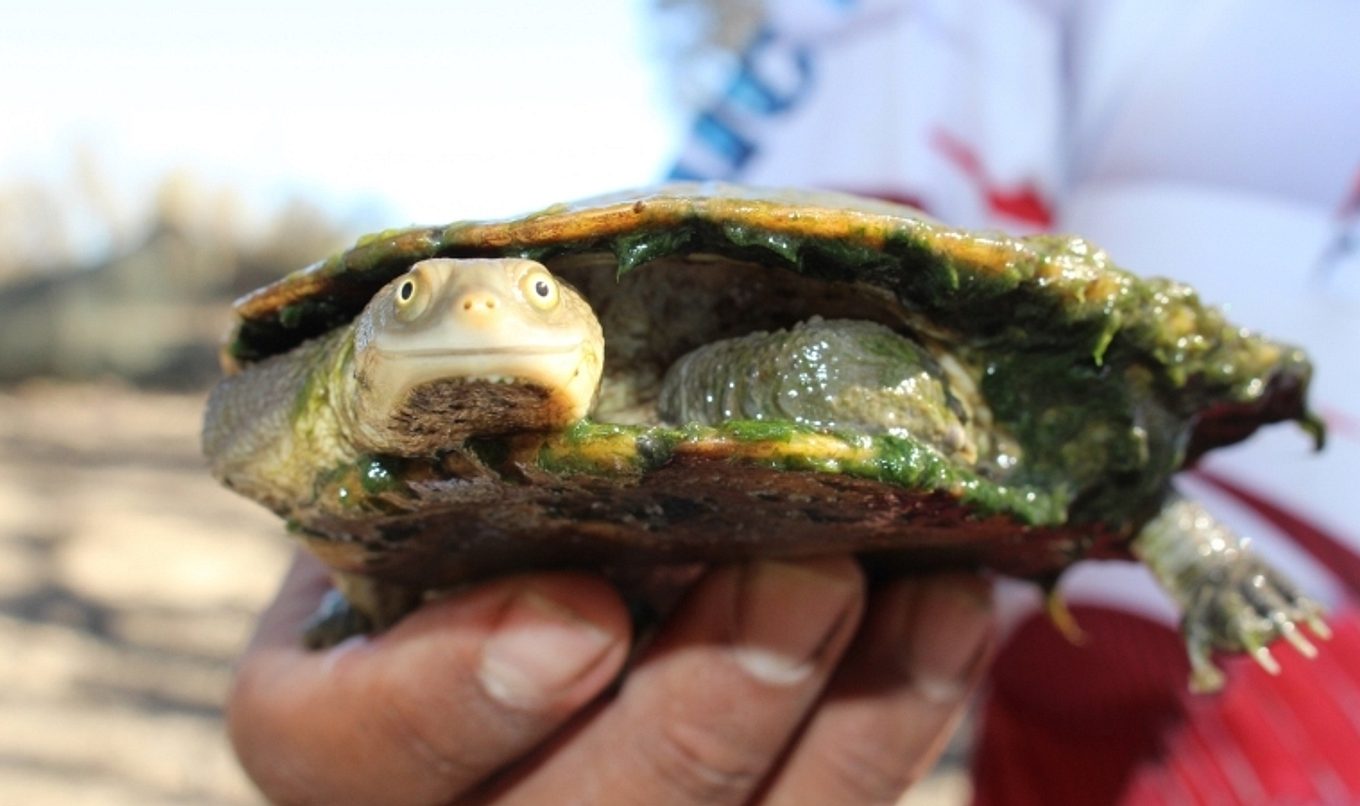Celebrating turtles on World Turtle Day
World Turtle Day (23 May 2019) encourages us think about turtles that first appeared during the time of the dinosaurs, more than 200 million years ago. Previously they have been a successful species, thriving while many other species, including the dinosaurs, perished.

Today it’s a different story; turtles are one of the most threatened species on earth. Of the 356 species of turtles and tortoises globally, more than 50 per cent are threatened with extinction.
Natural Resources SA Murray-Darling Basin (SAMDB) floodplain and wetlands officer Courtney Monk said while River Murray turtles are not listed as endangered, they are in an increasingly vulnerable situation.
“Turtle populations in South Australia have fallen drastically since the 1980s, especially the eastern long-necked turtle (Chelodina longicollis), and Murray short-necked turtle (Emydura macquarii). Population levels for these species have dropped by 69-91 percent over the past few decades,” she said.
The Natural Resources SAMDB floodplains and wetlands team together with the Department for Environment and Water, have been improving turtle habitat along the South Australian section of the river for many years.
Ms Monk said it’s exciting when the team is able to return water to a wetland after it has been dry for a while.
“The ecological response to a newly inundated wetland is fantastic to see,” she said.
“The first thing you notice is how clear the water is. With large carp removed, the wetland bed is quite firm and turbidity is greatly reduced, allowing aquatic vegetation to grow.
“This aquatic vegetation supports so much life, from native fish and invertebrates, to water birds, bugs and fish.
“Frogs also love these sites, and begin their breeding cycle and the next thing you know you’ve got tadpoles everywhere.”
“Our eastern long-necked and Murray short-necked turtles are also very fast to respond to these newly inundated areas. They move in quickly to take advantage of the resources boom.
“The great thing is that when they sense the returning water and make their way back to these wetlands, they find a habitat closer to what they’re adapted for – clear water, aquatic vegetation, and frogs legs for dinner.
“The eastern long-necked turtles are carnivorous, so the abundance of tadpoles, invertebrates, and other small creatures in a healthy wetland are a welcome find.
“The Murray short-necked turtles are omnivorous, so they’ll eat similar food sources to the long-necks, but will also eat the flourishing aquatic plant life.
“A wetland that is kept healthy through the right wetting and drying cycles is a valuable habitat resource.
“Helping to provide this habitat, especially for species that are in trouble like our River Murray turtles, is one of the best things the wetlands team get to do.”
This project is supported by the South Australian Murray-Darling Basin Natural Resources Management Board through funding from the Australian Government’s National Landcare Program and the NRM levies.
For more information visit TurtleSAT and Turtles Australia, some of the organisations working to improve the situation for turtles along the River Murray.

